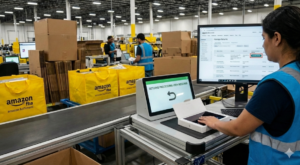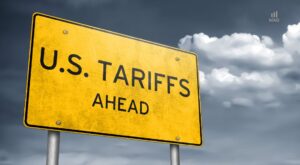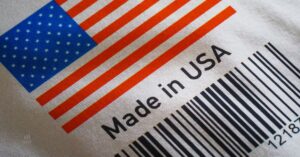
While the US-China tariff extension provides short-term relief for importers, it does not solve the core issue of Chinese sellers maintaining lower prices through undervalued declarations and currency advantages.
For Amazon sellers, the latest US-China tariff extension feels like much-needed breathing room before the Q4 rush. It’s a chance to stock up before tariffs potentially drive up consumer prices by an average of 1.8%.
The strategic question, however, is what you should do with this temporary breathing room. While many sellers will simply stock up, the smartest ones will address the deeper challenge that will still be there in 90 days.
Tariff Deadline Pushed to Mid-November
Al Jazeera"China is the US’s third-largest trade partner, after Mexico and Canada. It is heavily reliant on China for manufactured goods – from washing machines and TV sets to clothing."
The latest US-China tariff extension delays higher U.S. duties on Chinese imports for another 90 days, according to a report from CNBC. The move, signed by President Donald Trump just hours before tariffs were set to resume, pushes the deadline to mid-November.
The extension follows talks in Stockholm between US and Chinese trade negotiators in late July. Without the delay, US tariffs on Chinese goods would have returned to April’s peak levels of 145%, with China matching at 125%.
The May tariff truce brought significant reductions, lowering US import duties to 30% and Chinese levies to 10%. This pause in escalation allows sellers to maintain lower import costs, at least in the short term, ahead of Q4.
However, the pattern of abrupt policy shifts continues to make trade planning unpredictable. Previous tariff announcements have been revised, scaled back, or delayed with little advance notice.
Key details from the latest extension:
- New deadline is Mid-November 2025
- Tariffs remain at 30% (US) and 10% (China) during pause
- Prevented return to peak rates of 145% and 125%
- Follows meetings in Geneva (May) and Stockholm (July)
- Includes pressure on China to purchase more US soybeans
While this decision offers short-term relief, it does not address the long-standing price advantage Chinese sellers maintain through undervalued declarations and currency benefits. For US importers, the extension is a temporary opportunity, not a permanent fix.
A Short-Term Reprieve, What the Extension Means for Amazon Sellers
From our Amazon agency’s analysis, the 90-day tariff extension offers a crucial, but temporary, reprieve for US sellers. This delay is especially important for those preparing inventory for the Q4 holiday sales season.
American sellers now have a window to import goods at the lower 30% tariff rate, avoiding a potential jump to 145%. This provides valuable time to adjust supply chain and pricing strategies before any future hikes might occur.
Despite this relief, the extension does not solve the underlying competitive imbalance on the platform. Many US sellers still face rivals who maintain persistently low prices even with existing tariffs.
This pricing disparity is often attributed to several factors. Key reasons include:
- Undervaluing Products
Some sellers allegedly report artificially low manufacturing costs to significantly reduce their tariff bill.
- Currency Advantages
Favorable exchange rates and purchasing power allow some overseas businesses to operate on much thinner profit margins.
Some experts propose Purchasing Power Parity (PPP) as a potential long-term solution to balance this competition. This system would adjust payments to reflect the actual buying power in each country, neutralizing currency advantages.
However, implementing a PPP model would require significant policy changes from both Amazon and the federal government. For now, such a solution remains unlikely in the near term.
For the immediate future, US sellers should focus on capitalizing on the current situation. Recommended actions include:
- Stock Up for Q4
Use the 90-day window to secure inventory at the lower tariff rate.
- Monitor Negotiations
Stay informed about trade talks for potential policy changes in 2026.
- Add Value
Compete by offering superior customer service or faster shipping options.
Maximize the US-China Tariff Extension Window
Sellers can gain a lot of actionable insights from what Eric S. Youngstrom discussed in his article on Parcel Industry.
With duties holding at 30% instead of surging back to 145%, online retailers have a short period to act strategically before rates potentially climb again.
For months, elevated tariffs forced sellers to raise prices, cut margins, or pause inventory replenishment altogether. The current extension provides a chance to restock, strengthen supplier relationships, and optimize pricing strategies ahead of Q4.
Key Actions Sellers Should Take Now
- Restock Inventory
Sellers who delayed purchases earlier in the year can now move forward with replenishment at a lower landed cost. Fast-moving SKUs, seasonal products, and Q4 staples like holiday bundles should be prioritized.
Acting now reduces the risk of stockouts during Prime Day, back-to-school sales, and early holiday demand.
- Renegotiate with Suppliers
With tariffs down and competition among Chinese manufacturers increasing, sellers should open discussions for better pricing, order quantity incentives, or more flexible payment terms. Many suppliers are eager to regain U.S. business lost during the tariff surge.
- Revamp Pricing and Promotions
Reduced duties strengthen margins, enabling sellers to consider lowering retail prices, running limited-time promotions, or reinvesting savings into advertising, packaging improvements, or faster shipping options.
- Act Quickly
The extension is scheduled to last only 90 days, and port congestion is already building as major retailers accelerate imports. Delays are likely, so orders should be placed immediately to ensure inventory arrives before the peak season begins.
- Explore Alternate Sourcing
While capitalizing on current savings is essential, sellers should also explore sourcing from countries such as Vietnam, Thailand, or Mexico to reduce exposure to future tariff volatility.
- Forecast for Multiple Scenarios
Inventory and pricing plans should account for the possibility of tariffs returning to 145% after the extension ends. Sellers must be prepared to adjust free shipping offers, bundle profitability, and overall pricing if rates increase.
In short, the tariff reprieve offers a unique chance to build stock, secure better terms, and improve profitability ahead of Q4. Sellers who act decisively now will be better positioned to handle both the holiday rush and the uncertainty of future trade policy shifts.
OliverWyman"Like any emerging risk, a first step in managing tariffs is to understand potential exposures. Businesses should seek to quantify the risk that tariffs could have on their cost structures and supply chains."






